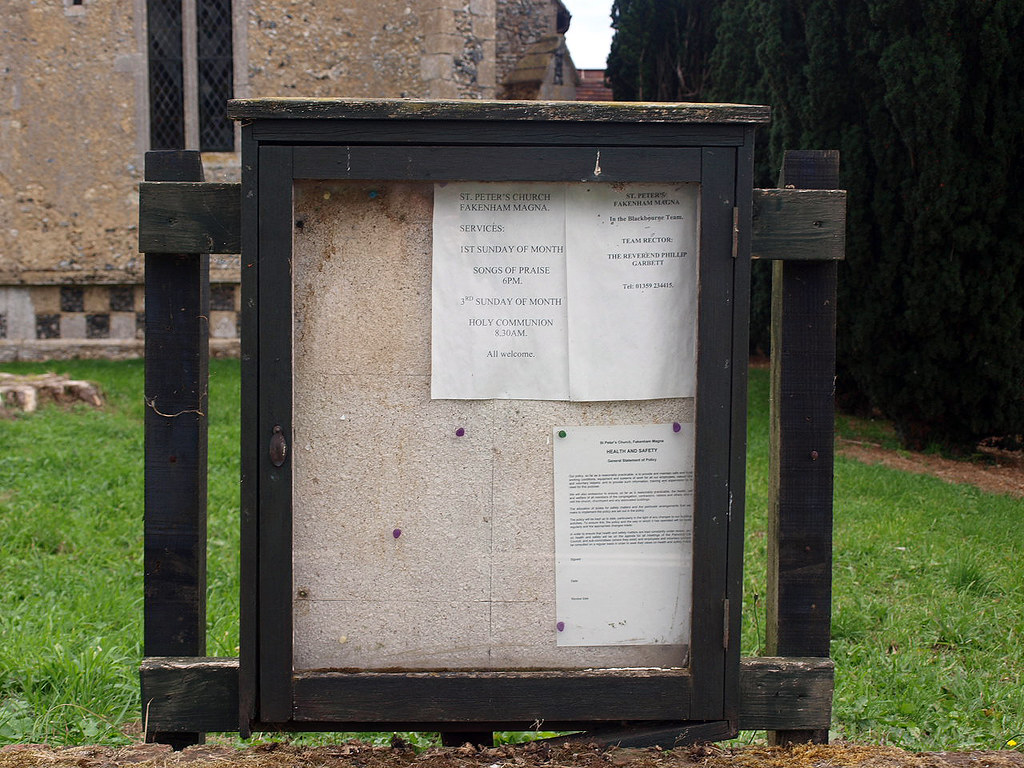ST PETER. The E angles of the nave with long and short work prove the Saxon origin of this part of the church. Norman one blocked N and one blocked S window, the latter just W of the porch gable. In the chancel a pair of C13 lancet windows. W tower, nave windows, and most chancel windows Dec. - SCREEN. Much restored; with one-Light divisions. - PLATE. Cup 1629; Paten 1703.
FAKENHAM MAGNA. It should be the last place in England to have a ghost story, but it has one with a very pleasant ending. Tucked away near Euston Park among some of the finest woods in Suffolk, it has a stream with a tiny bridge from which we get the best view of its thatched cottages and its church with a grey tower where a bell has been ringing since Queen Elizabeth’s time.
It is a simple church, but so old that there are still fragments of Saxon work in the chancel. There are two little Norman windows in walls mostly 13th and 14th century, fine buttresses with canopies, a porch with an ancient stoup, and a door notable for its long hinges and a remarkable knocker - rather like the face Scrooge saw on Christmas Eve. The chancel has an ancient piscina, and a 15th century screen restored with new faces to watch over the old woodwork below. The font has been in use since the time when Chaucer was a child. Some fragments of old glass show angels and frogs and a demon ; and among the memorials is one to the Taylors of Henry the Eighth’s day.
Facing the church is the thatched cottage where Robert Bloomfield’s mother was born. We know from his poems that Robert Bloomfield often came to Fakenham, and we think it must have been from his mother that he first heard the tale of the Fakenham ghost, the story of a woman who was crossing Euston Park one night when she heard something behind her and ran home too terrified to look round at the dreadful shape. They say she fainted when she reached her doorstep; yet the poor ghost was nothing more than an ass’s foal, and the end of the tale is told in one of Bloomfield’s poems:
No goblin he, no imp of sin,
No crimes has ever known;
They took the shaggy stranger in
And reared him as their own.
His little hoofs would rattle round
Upon the cottage floor;
The matron learned to love the sound
That frightened her before.
No crimes has ever known;
They took the shaggy stranger in
And reared him as their own.
His little hoofs would rattle round
Upon the cottage floor;
The matron learned to love the sound
That frightened her before.

No comments:
Post a Comment